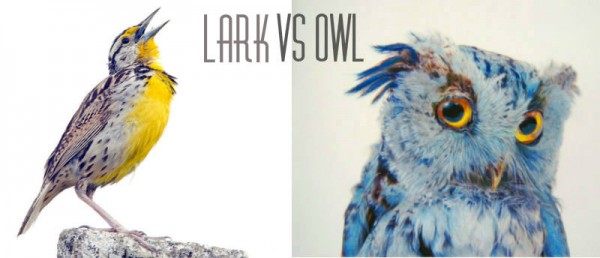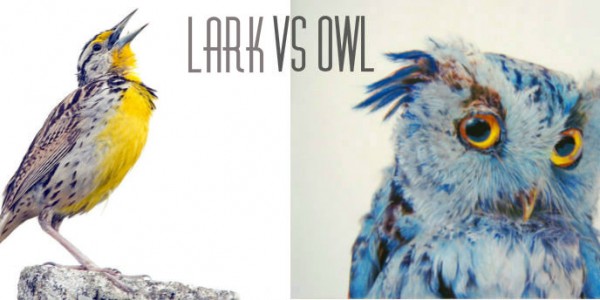
Geneticists from Leicester University in England have identified via a recent study, for the first time, some genetic differences between nighttime and daytime people.The study is based on findings and analysis of fruit flies, leading to discovering nearly 80 genes which can be associated with owls (eveningness) and larks (morningness).
According to Doctor Eran Tauber, one of the three authors of the study, Most people find that their performance is at peak at specific times of day. A great variation in this diurnal preference is found, from early risers ‘larks’ to late night ‘owls’. The impact of this preference (‘chronotype’) on health and behaviour is well documented, but the molecular basis is largely unknown. In this new study, we have used fruit flies, whose gene clocks are very similar to human, to get a first insight into the molecular basis of ‘morningness/eveningness’ preference. Because this genetic system is so similar between insects and human, there is a good chance that some of the genes that we have identified in flies, would be also important for diurnal preference in humans. Most of these genes are present in the mammalian genome would therefore be useful starting points for research in human. For example, a relatively large number of genes were associated with a molecular signalling pathway called MAPK which is also present in human and is implicated in the development of many cancers.
The researchers used the fruit-fly Drosophila to identify the genes associated with morningness and eveningness, focusing on the timing of adult emergence from their pupal case, and while most strains exhibit eclosion during dawn, there were a large number of wild strains that exhibit late eclosion. The team used RNA sequencing in order to quantify gene expression across an entire genome. They then compared the ‘owl’ and ‘lark’ strains, finding out that nearly 80 genes that show substantial difference in their expression and may account for the different diurnal preference.
According to Tauber, the difference is largely due to genetic variations in their DNA sequences–different gene versions that are present in larks and owls. In another set of experiments, we took advantage of the fact that the DNA sequence of the entire genome of many fly strains in now available. We carried a large survey and identified some interesting genetic variations that are associated with diurnal preference. We are currently analysing the data and hope to publish the results in due course.
With humanity moving to living more and more indoors, there’s less and less exposure to the natural variations in light and temperature that characterise the day-night cycle, which causes a causes a discrepancy between internal and external timing. This creates a clock dysfunction that is reflected in temporal disorientation and sleep problems, obesity, mental illness, cardiovascular disease and cancer.
The study attempts to be the first stepping stone to identifying which genes exactly are involved in the process, which will eventually allow better personal medicine and tailored therapies for owls and larks. Molecular processes in late risers or night people isn’t just delayed compared with larks, but are entirely different. Once a gene expression is delayed (in Larks), a completely different cascade of molecular events is carried, similar to the ball in a pinball machine that takes a different route in each run. The end point might be similar, but the different molecular routes result in a different journey time.
